I wish to implement a "Last Observation Carried Forward" for a data set I am working on which has missing values at the end of it.
Here is a simple code to do it (question after it):
LOCF <- function(x)
{
# Last Observation Carried Forward (for a left to right series)
LOCF <- max(which(!is.na(x))) # the location of the Last Observation to Carry Forward
x[LOCF:length(x)] <- x[LOCF]
return(x)
}
# example:
LOCF(c(1,2,3,4,NA,NA))
LOCF(c(1,NA,3,4,NA,NA))
Now this works great for simple vectors. But if I where to try and use it on a data frame:
a <- data.frame(rep("a",4), 1:4,1:4, c(1,NA,NA,NA))
a
t(apply(a, 1, LOCF)) # will make a mess
It will turn my data frame into a character matrix.
Can you think of a way to do LOCF on a data.frame, without turning it into a matrix? (I could use loops and such to correct the mess, but would love for a more elegant solution)

